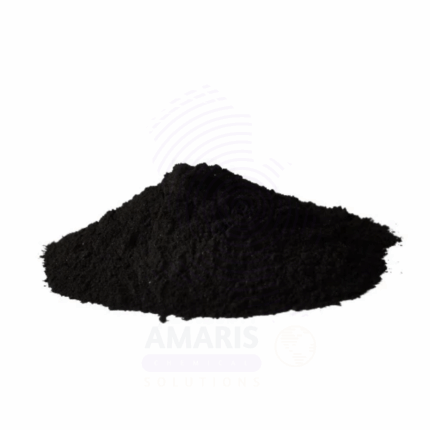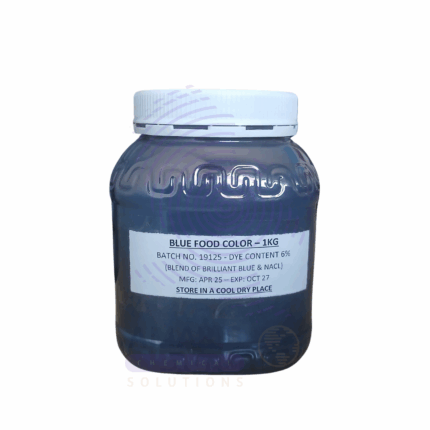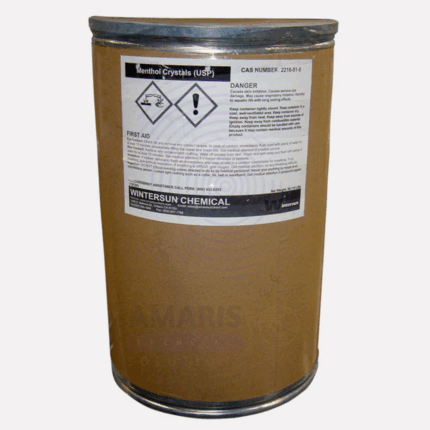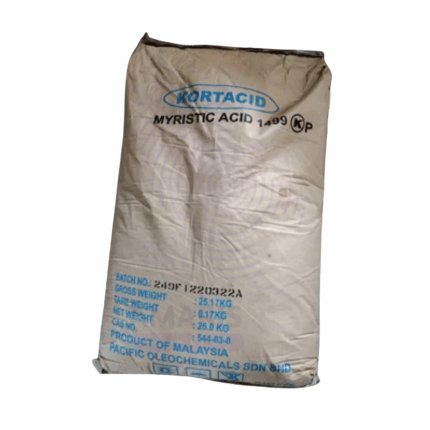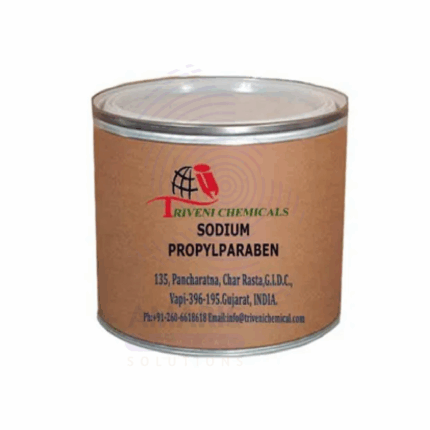Anion
Anions are negatively charged ions formed when an atom or molecule gains one or more electrons. They play vital roles in chemistry, biology, and industrial processes. Anions are key participants in ionic bonding, acid-base chemistry, and electrochemical reactions. Common anions include chloride (Cl⁻), sulfate (SO₄²⁻), nitrate (NO₃⁻), and phosphate (PO₄³⁻). Their behavior and interaction affect processes ranging from water treatment and agriculture to physiological functions and battery technology.
Anion
Primary Uses
- Water Treatment
- Removal of contaminants through ion exchange and coagulation processes involving anions such as sulfate, nitrate, and chloride.
- Agriculture & Fertilizers
- Anions like nitrate and phosphate are essential nutrients supplied in fertilizers to promote plant growth.
- Chemical Manufacturing
- Used in synthesis of various chemicals, salts, and acids via anionic intermediates.
- Electrochemistry & Batteries
- Serve as charge carriers in batteries and electrolytic cells (e.g., sulfate and chloride ions).
- Pharmaceuticals & Biology
- Play key roles in cellular functions, nerve transmission, and acid-base balance.
Secondary Uses
- Analytical Chemistry
- Anion detection and quantification critical in environmental and clinical testing.
- Industrial Processes
- Used as reactants or catalysts in various industrial chemical reactions.
- Food Industry
Certain anions (e.g., citrate, lactate) are used as preservatives or acidity regulators.
- Basic Identification Attributes
- Chemical Name (IUPAC): Variable (depends on specific anion, e.g., chloride, sulfate)
- Common/Trade Name: Anion
- CAS Number: Not applicable (varies with specific anion)
- HS Code: Varies depending on compound
- Molecular Formula: Varies (e.g., Cl⁻, SO₄²⁻, NO₃⁻)
- Synonyms: Negative ion, charged ion, anionic species
- Physical & Chemical Properties
- Physical State: Typically part of salts, solutions, or ionic compounds
- Color & Odor: Dependent on compound
- Solubility: Generally soluble in water as part of ionic salts
- Charge: Negative (varying from -1 to -3)
- Reactivity: Reacts with cations to form ionic compounds; participates in redox and acid-base reactions
- Safety & Hazard Attributes
- Hazard Class (GHS): Dependent on specific anion compound; many anions are non-hazardous, some may be toxic or corrosive
- Exposure Limits: Varies by compound
- Reactivity: Generally stable as part of salts; some anions may be reactive under certain conditions (e.g., nitrate as oxidizer)
- Storage & Handling Attributes
- Storage Conditions: Store compounds containing anions as per specific compound requirements
- Container Type: Depends on compound (usually sealed containers to prevent contamination or moisture ingress)
- Shelf Life: Dependent on compound stability
- Regulatory & Compliance Attributes
- Regulatory Status: Depends on specific anion compound and application
- Transportation: Varies; some anion-containing compounds classified as hazardous materials
- Environmental & Health Impact
- Ecotoxicity: Varies widely; some anions (e.g., nitrate) contribute to eutrophication in water bodies
- Persistence: Many anions persist in environment, some are biodegradable or removable by treatment
Carcinogenicity: Depends on specific compound; many common anions are non-carcinogenic
-
Safety Handling Precautions
- PPE: Use gloves, goggles, and protective clothing when handling compounds containing reactive or hazardous anions.
- Handling: Avoid inhalation or ingestion of powders; handle in well-ventilated areas.
- Storage: Store as per compound-specific guidelines to prevent degradation or reaction.
- Hygiene: Wash hands after handling; avoid eating or drinking near materials.
First Aid Measures
- Inhalation: Move to fresh air if inhaled; seek medical attention if respiratory symptoms develop.
- Skin Contact: Wash affected area with water; seek medical advice if irritation occurs.
- Eye Contact: Rinse eyes with water for at least 15 minutes; seek medical care if irritation persists.
- Ingestion: Rinse mouth; seek medical help if adverse symptoms appear.
Firefighting Measures
- Fire Hazards: Generally non-flammable, but some anion-containing compounds (e.g., nitrates) may act as oxidizers and increase fire risk.
- Extinguishing Media: Use water, foam, or dry chemical depending on material involved.
Special Precautions: Use appropriate protective gear; prevent inhalation of smoke or fumes.


 Preservatives(food)
Preservatives(food) Flavor Enhancers
Flavor Enhancers Acidulants
Acidulants Sweeteners
Sweeteners Antioxidants
Antioxidants Colorants(food)
Colorants(food) Nutraceutical Ingredients (food)
Nutraceutical Ingredients (food) Nutrient Supplements
Nutrient Supplements Emulsifiers
Emulsifiers
 Collectors
Collectors Dust Suppressants
Dust Suppressants Explosives and Blasting Agents
Explosives and Blasting Agents Flocculants and Coagulants
Flocculants and Coagulants Frothers
Frothers Leaching Agents
Leaching Agents pH Modifiers
pH Modifiers Precious Metal Extraction Agents
Precious Metal Extraction Agents
 Antioxidants(plastic)
Antioxidants(plastic) Colorants (Pigments, Dyes)
Colorants (Pigments, Dyes) Fillers and Reinforcements
Fillers and Reinforcements Flame Retardants
Flame Retardants Monomers
Monomers Plasticizers
Plasticizers Polymerization Initiators
Polymerization Initiators Stabilizers (UV, Heat)
Stabilizers (UV, Heat)
 Antifoaming Agents
Antifoaming Agents Chelating Agents
Chelating Agents Coagulants and Flocculants
Coagulants and Flocculants Corrosion Inhibitors
Corrosion Inhibitors Disinfectants and Biocides
Disinfectants and Biocides Oxidizing Agents
Oxidizing Agents pH Adjusters
pH Adjusters Scale Inhibitors( water)
Scale Inhibitors( water)
 Antioxidants(cosmetic)
Antioxidants(cosmetic) Emollients
Emollients Fragrances and Essential Oils
Fragrances and Essential Oils Humectants
Humectants Preservatives
Preservatives Surfactants(cosmetic)
Surfactants(cosmetic) Thickeners
Thickeners UV Filters
UV Filters
 Fertilizers
Fertilizers Soil Conditioners
Soil Conditioners Plant Growth Regulators
Plant Growth Regulators Animal Feed Additives
Animal Feed Additives Biostimulants
Biostimulants Pesticides (Herbicides, Insecticides, Fungicides)
Pesticides (Herbicides, Insecticides, Fungicides)
 Active Pharmaceutical Ingredients (APIs)
Active Pharmaceutical Ingredients (APIs) Excipients
Excipients Solvents(pharmaceutical)
Solvents(pharmaceutical) Antibiotics
Antibiotics Antiseptics and Disinfectants
Antiseptics and Disinfectants Vaccine Adjuvants
Vaccine Adjuvants Nutraceutical Ingredients (pharmaceutical)
Nutraceutical Ingredients (pharmaceutical) Analgesics & Antipyretics
Analgesics & Antipyretics
 Analytical Reagents
Analytical Reagents Solvents(lab)
Solvents(lab) Chromatography Chemicals
Chromatography Chemicals Spectroscopy Reagents
Spectroscopy Reagents microbiology-and-cell-culture-reagents
microbiology-and-cell-culture-reagents Molecular Biology Reagents
Molecular Biology Reagents Biochemical Reagents
Biochemical Reagents Inorganic and Organic Standards
Inorganic and Organic Standards Laboratory Safety Chemicals
Laboratory Safety Chemicals Specialty Laboratory Chemicals(Special Laboratory Equipment)
Specialty Laboratory Chemicals(Special Laboratory Equipment)
 Demulsifiers
Demulsifiers Hydraulic Fracturing Fluids
Hydraulic Fracturing Fluids Scale Inhibitors(oil)
Scale Inhibitors(oil) Surfactants(oil)
Surfactants(oil) Drilling Fluids
Drilling Fluids
 Dyes and Pigments
Dyes and Pigments Bleaching Agents
Bleaching Agents Softening Agents
Softening Agents Finishing Agents
Finishing Agents Antistatic Agents
Antistatic Agents
 Admixtures
Admixtures Waterproofing Agents
Waterproofing Agents Sealants and Adhesives
Sealants and Adhesives Curing Compounds
Curing Compounds Concrete Repair Chemicals
Concrete Repair Chemicals Anti-Corrosion Coatings
Anti-Corrosion Coatings
 Surfactants(cleaning)
Surfactants(cleaning) Builders
Builders Enzymes
Enzymes Solvents (Cleaning)
Solvents (Cleaning) Fragrances
Fragrances
 Electronic Chemicals
Electronic Chemicals Catalysts
Catalysts Lubricants
Lubricants Photographic Chemicals
Photographic Chemicals Refrigerants
Refrigerants Automotive chemicals
Automotive chemicals Pyrotechnic Chemicals
Pyrotechnic Chemicals
 Biodegradable Surfactants
Biodegradable Surfactants Bio-based Solvents
Bio-based Solvents Renewable Polymers
Renewable Polymers Carbon Capture Chemicals
Carbon Capture Chemicals Wastewater Treatment Chemicals
Wastewater Treatment Chemicals
 Pigments
Pigments Solvents(paint)
Solvents(paint) Specialty Coatings
Specialty Coatings Binders/Resins
Binders/Resins Additives
Additives Driers
Driers Anti-Corrosion Agents
Anti-Corrosion Agents Functional Coatings
Functional Coatings Application-Specific Coatings
Application-Specific Coatings
 Fresh Herbs
Fresh Herbs Ground Spices
Ground Spices Whole Spices
Whole Spices Spice Blends
Spice Blends Dried Herbs
Dried Herbs
 Leavening Agents
Leavening Agents Dough Conditioners
Dough Conditioners Flour Treatments
Flour Treatments Fat Replacers
Fat Replacers Decoratives
Decoratives Preservatives(baking)
Preservatives(baking)
 Plasticizers & Softeners
Plasticizers & Softeners Reinforcing Agents
Reinforcing Agents Adhesion Promoters
Adhesion Promoters Vulcanizing Agents
Vulcanizing Agents Antidegradants
Antidegradants Blowing Agents
Blowing Agents Fillers & Extenders
Fillers & Extenders Accelerators & Retarders
Accelerators & Retarders
